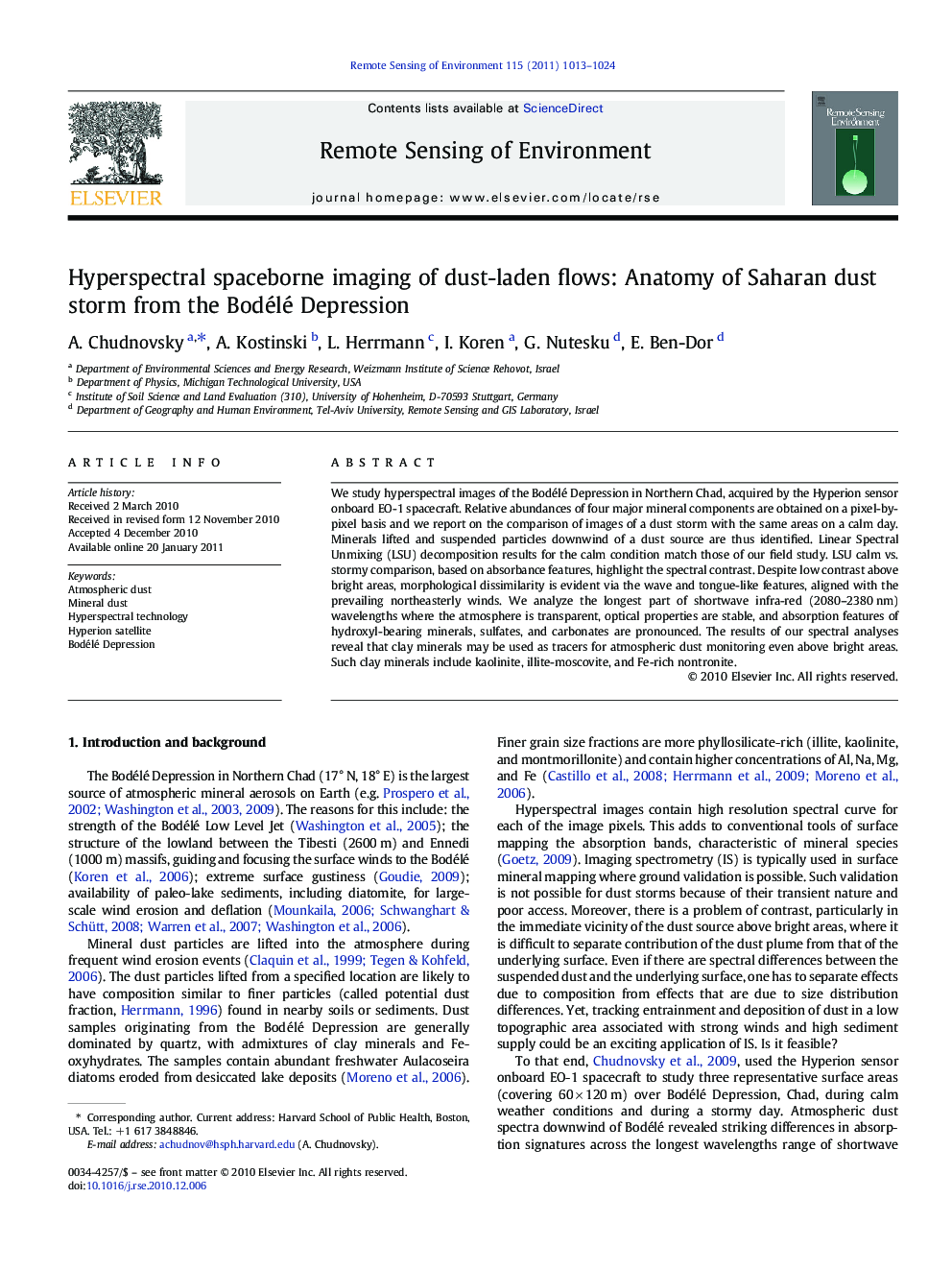| Article ID | Journal | Published Year | Pages | File Type |
|---|---|---|---|---|
| 4459561 | Remote Sensing of Environment | 2011 | 12 Pages |
We study hyperspectral images of the Bodélé Depression in Northern Chad, acquired by the Hyperion sensor onboard EO-1 spacecraft. Relative abundances of four major mineral components are obtained on a pixel-by-pixel basis and we report on the comparison of images of a dust storm with the same areas on a calm day. Minerals lifted and suspended particles downwind of a dust source are thus identified. Linear Spectral Unmixing (LSU) decomposition results for the calm condition match those of our field study. LSU calm vs. stormy comparison, based on absorbance features, highlight the spectral contrast. Despite low contrast above bright areas, morphological dissimilarity is evident via the wave and tongue-like features, aligned with the prevailing northeasterly winds. We analyze the longest part of shortwave infra-red (2080–2380 nm) wavelengths where the atmosphere is transparent, optical properties are stable, and absorption features of hydroxyl-bearing minerals, sulfates, and carbonates are pronounced. The results of our spectral analyses reveal that clay minerals may be used as tracers for atmospheric dust monitoring even above bright areas. Such clay minerals include kaolinite, illite-moscovite, and Fe-rich nontronite.
Research Highlights► We applied Linear Spectral Unmixing on a pixel-by-pixel basis to determine mineral fractions that calm and stormy images share using data from Hyperion sensor. ► These fraction assessments of each mineral for both images enabled us to track dust plumes. ► We also examined the weak contrast problem occurring in the vicinity of a dust source. ► Clay minerals may be used as tracers for atmospheric dust monitoring above bright areas.
